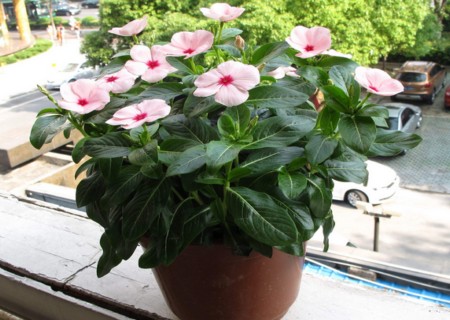Cutting Propagation method of potted Kumquat
Kumquat, native to southern China, is often planted in potted plants. It begins to bloom in early summer and ripens at the end of autumn. It is a potted fruit tree with flowers and fruits in one. Potted kumquat has a high ornamental value, especially in the flowering and fruit stage, so how does this kind of fruit tree propagate in pots?

In general, potted kumquat can be propagated by cutting and grafting. The following editor will elaborate for you from the perspective of cutting.
Cutting is one of the most common methods used in the propagation of many potted flowers and plants, which is simple and easy to operate.
1. Cutting time
The cuttage propagation of kumquat should be carried out in spring and summer, and it is generally more suitable for cuttage from April to June, because the temperature is generally above 20 °C at this stage, and there is no baking in the hot sun in midsummer, so it is more suitable for the survival and growth of cuttings.
2. Make cuttings
First of all, the strong-growing branches were selected from the mother plant, and then cut into cuttings of about 7-10 cm in length. 1-2 petioles were retained on each cuttings, while only a small half of the leaves on the petioles were retained, and the rest of the leaves were cut off. After cutting the cuttings, the upper end of the cuttings must be sealed with wax to avoid evaporation.
3. Cutting process
A soil tile basin with moderate size and good air permeability was selected as the cutting basin, the soft sandy loam soil which had been sterilized was loaded into the basin, and then the prepared cuttings were inserted into the nutrient soil. If cuttings are carried out during April-May, the inserted part accounts for about 60% of the total branch length, and then it is maintained in a semi-shaded condition; if the cuttings are carried out in June, the inserted part accounts for about 40% of the total branch length, and then it is maintained in a full-shaded environment. At the same time, in order to improve the survival rate of cuttings, it is recommended that cutting at the same time.
4. Cover the film
All cuttings are watered once after the cuttings are finished, and then cover the basin mouth with transparent plastic film. The purpose of this is to prevent Rain Water from showering, but also to prevent the invasion of bacteria, and more importantly, to keep the cuttings in a certain degree of humidity so that they will not die due to lack of moisture.
5. Maintenance and management
It takes about 2 months from the completion of the cuttage to the rooting and sprouting of the cuttings, so it is necessary to disassemble the film after a period of time to ventilate and ventilate, about every 2 weeks. At the same time, pay attention to observe the dry and wet state of the basin soil, watering and replenishing water as appropriate to maintain the humidity of the basin soil and provide sufficient water supply for the cuttings. When it is found that the young leaves on the cuttings are scattered, the film can be removed, and the young plants will continue to sprout new branches and leaves, and then the young plants can be replanted in pots. (written by: laughing Book 2017-08-18 15:00)
Time: 2019-06-08 Click:
- Prev

Edible fungi preservation method, edible fungi disease prevention should cut off the transmission route
Edible Fungi Disease Prevention Should Cut off Transmission Route
- Next

How to grow spring flowers in potted plants
Catharanthus roseus is a perennial herbaceous plant with excellent ornamental effect and long flowering period. as long as it is properly maintained and managed, Catharanthus roseus can bloom in four seasons. This flower plant grows well in a fertile, loose and well-drained soil environment. Although this plant is also resistant to barren
Related
- Fuxing push coffee new agricultural production and marketing class: lack of small-scale processing plants
- Jujube rice field leisure farm deep ploughing Yilan for five years to create a space for organic food and play
- Nongyu Farm-A trial of organic papaya for brave women with advanced technology
- Four points for attention in the prevention and control of diseases and insect pests of edible fungi
- How to add nutrient solution to Edible Fungi
- Is there any good way to control edible fungus mites?
- Open Inoculation Technology of Edible Fungi
- Is there any clever way to use fertilizer for edible fungus in winter?
- What agents are used to kill the pathogens of edible fungi in the mushroom shed?
- Rapid drying of Edible Fungi

